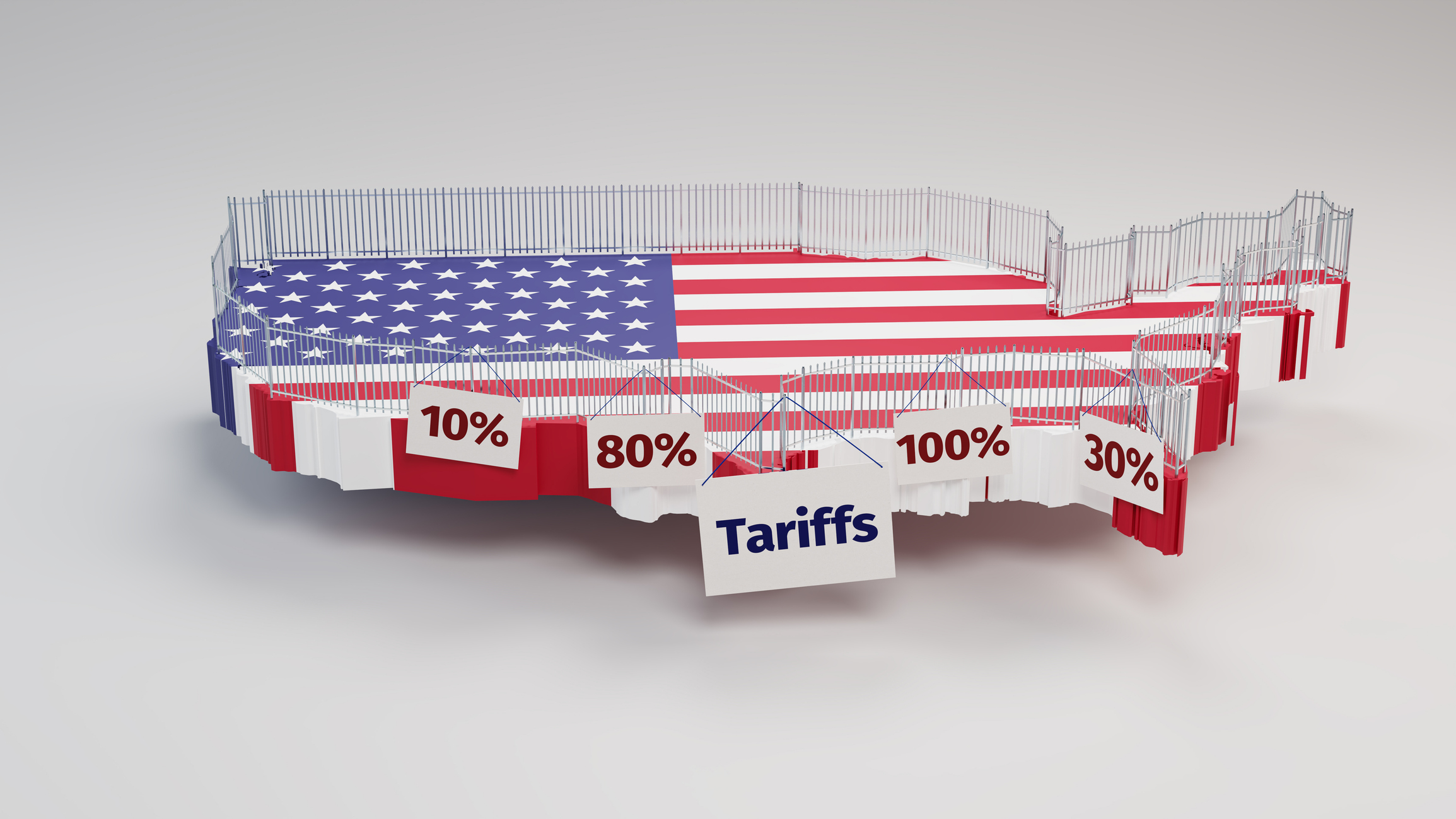6 Retail Stocks to Cash In On
Shares of both super discounters and luxury chains can make good investments. We name three of each.

Here’s a head-scratcher: Coach, the purveyor of pricey purses, keeps banging out record profits at the same time that Dollar General and Dollar Tree, which appeal to price-conscious shoppers, rake in cash hand over fist. For investors, these companies show that you can make money in retail stocks even in a dicey economy. Indeed, in the case of the discounters, it’s because of the economy.
The dynamic may not be as contradictory as it seems. In tough times—and times have been tough for many Americans since the 2008–09 recession—middle-income consumers flock to discount chains. Those discounters that offer both quality and good prices have seized the moment to convert normally higher-end shoppers into loyal customers. The rich, however, are less sensitive to economic woes and continue to frequent their favorite stores through upturns and downturns alike.
With the economy once again looking tenuous, the resilience of retailers that cater to the outer edges of wealth has not been lost on Wall Street. Even while the rest of the stock market was retreating this spring, shares of dollar-store operators advanced. And although some high-end retailers have stumbled, analysts say their stocks are attractive because they’re as cheap as they’ve been in years.

Sign up for Kiplinger’s Free E-Newsletters
Profit and prosper with the best of expert advice on investing, taxes, retirement, personal finance and more - straight to your e-mail.
Profit and prosper with the best of expert advice - straight to your e-mail.
Of course, you can’t just throw darts at these opposite ends of the retail spectrum, hoping to score a bull’s-eye. For every outperformer, there’s a loser. “The key is delivering a value proposition,” says James Ragan, analyst with Crowell Weedon & Co. in Los Angeles. “If the quality is there, people will pay up for the brand. And if you offer quality at a discount price, consumers will beat a path to your door.”
Below, we name six retailers catering to the rich or the not-so-rich that are worth putting in your shopping bag.
Retail for the Rich
Shares of Coach (symbol COH) are usually almost as pricey as the firm’s handbags. But the market’s spring plunge, triggered by concerns about economic weakness in Europe (where Coach has only a modest presence) brought the shares into reasonably priced territory. Down $17 from its late-March high, Coach, at $63, sells for 15 times estimated year-ahead earnings.
Widely admired for selling stylish, well-made goods—products so attractive that consumers don’t blink at paying $1,200 for a “tote”—Coach profit margins are the envy of the industry. The company, which this fall will introduce a new line of leather goods called Legacy, reported that earnings for the quarter that ended March 31 were up 24%. Coach also hiked its dividend by 33% in April, and its stock yields 1.9%. Analysts expect Coach to deliver blistering annual earnings growth of 16% over the next three to five years. Jason Asaeda, an analyst with S&P Capital IQ, expects the stock to hit $85 within the next year.
You may not be familiar with Oxford Industries (OXM), but you probably know its luxury clothing brands, including Ben Sherman, Lilly Pulitzer and Tommy Bahama, whose stores have long been a fixture in vacation destinations, from Myrtle Beach to Honolulu. In fact, Hawaiian shirts and Palm Beach skirts may be as much about the destination as the clothing. To capitalize on that appeal, Tommy Bahama, which accounts for about half of Oxford’s sales, recently started attaching island-fare restaurants to some stores in “destination malls,” says Ragan. Those stores generate more sales per square foot than the company’s stand-alone clothing stores. Plus, Oxford recently announced that Tommy Bahama will expand into Asia, where the company plans to open new stores in Macau and Singapore, and one of its signature restaurant-retail combinations in Tokyo. The Atlanta-based company is also scouting for opportunities in Hong Kong and Shanghai.
Oxford is reasonably priced. At $44, the stock sells for 16 times estimated earnings for the current fiscal year. Meanwhile, analysts expect Oxford to generate earnings growth of 15% annually over the next three to five years. However, Ragan thinks analysts are underestimating the impact of overseas expansion. His 12-month price target for the stock is $60.
Tiffany (TIF) is where the elegant consumer shops for bling, both here and abroad. But with 32 of the company’s 247 stores in Europe, overseas worries have battered the stock. Trading for $84 in July 2011, the stock now sells for $54, taking its latest hit when the New York City–based company issued disappointing earnings for the quarter that ended April 30 and said that even domestic sales have been soft lately.
The biggest problem, says Morningstar analyst Paul Swinand, is that Tiffany buys raw materials, such as diamonds, in advance of using them to turn into jewelry. Diamond prices have been weak lately, which makes the previously purchased gems seem particularly dear. That gives an edge to some Tiffany competitors with a faster turnaround from diamond purchase to sale. But Swinand expects that edge to be temporary. Meantime, the stock is selling at its lowest price-earnings ratio in years—about 15 times the midpoint of Tiffany’s earnings forecast for the current year. Swinand figures that profits will rise 12% to 15% annually over the next few years and expects investors to reap market-beating returns even if there are a few short-term bumps. “I would rather buy a great company at a reasonable valuation now than wait in the hope that it might someday get cheaper,” he says. Asaeda, also a Tiffany fan, is even more optimistic. He thinks the stock will sell for $70 within a year.
Best of the Bargain Stores
The recession was very good to dollar stores, says analyst Joan Storms, of Wedbush Securities in Los Angeles, pushing many middle-income consumers into penny-pinching mode. Off-price retailers that once catered only to low-income consumers have now established a much larger, loyal following. That’s helped fuel double-digit earnings growth in the entire sector. “Dollar stores are now considered a real growth category,” says Storms.
The bad news is that the stocks have done so well in the past year that many are trading at record highs. In fact, Family Dollar (FDO), which Storms had recommended earlier in the year, shot well past her one-year target price of $58 and now trades at $67. But Storms thinks Family Dollar’s main rivals—Dollar Tree (DLTR) and Dollar General (DG)—are still worth buying.
Their stories are similar. Dollar General, based in Goodlettsville, Tenn., operates 10,052 stores in 40 states. Dollar Tree, based in Chesapeake, Va., runs 4,451 stores in 48 states. The stores are usually 7,000 to 12,000 square feet—a fraction of the size of a Wal-Mart superstore. The smaller size allows the dollar chains to set up shop in suburban malls, conveniently located for the consumer who needs to pick up a loaf of bread or carton of milk on the way home from work. The stores specialize in food and housewares—particularly paper and cleaning products, which customers frequently replace.
The companies’ stocks are not as cheap as the stuff on their shelves, however. At $49, Dollar General sells for 18 times current-year estimated earnings; Dollar Tree, at $100, trades for 20 times forecasted profits. But there are plenty of suburban communities yet to be penetrated, and Storms thinks the companies’ superior growth prospects justify their above-average price-earnings ratios. Her one-year price targets are $54 and $107, respectively, for Dollar General and Dollar Tree. Her target for Dollar Tree isn’t impressive, but with analysts projecting three- to five-year earnings growth of 18% a year, the stock could deliver pleasant surprises.
As for Wal-Mart Stores (WMT), the granddaddy of discounters, its shares retreated in April following media reports that executives in the company’s Bentonville, Ark., headquarters had covered up millions of dollars in bribes allegedly paid to Mexican officials by executives at Wal-Mart de Mexico. But in little more than a month, the stock roared back, from $57 to $66, as investors concluded that even if the company had done something wrong, the repercussions were unlikely to have a material impact on profits.
Meanwhile, a corporate restructuring effort that hurt results last year appears to have reaped rewards. In the quarter that ended April 27, same-store sales—a key measure for retailers—rose by 2.6% at Wal-Mart stores and by 5.3% at Sam’s Club locations. That’s the best domestic performance in years, says analyst Ian Gordon, of S&P Capital IQ. Better yet, sales and operating income at Wal-Mart International are growing at a double-digit rate. Although the overseas arm accounts for only about one-fifth of sales today, it’s likely to be a key driver of Wal-Mart’s future growth.
Compared with expected profit growth, Wal-Mart shares are not especially cheap. They trade at 13 times estimated current-year earnings, well above expected long-term earnings growth of 9% a year. But the shares yield an above-average 2.4%, and if they appreciate along with earnings growth, they’ll deliver a handsome return over the long haul.
Kathy Kristof is a contributing editor to Kiplinger’s Personal Finance and author of the book Investing 101. Follow her on Twitter. Or email her at practicalinvesting@kiplinger.com.
Kiplinger's Investing for Income will help you maximize your cash yield under any economic conditions. Download the premier issue for free.
Get Kiplinger Today newsletter — free
Profit and prosper with the best of Kiplinger's advice on investing, taxes, retirement, personal finance and much more. Delivered daily. Enter your email in the box and click Sign Me Up.

-
 The AI Doctor Coming to Read Your Test Results
The AI Doctor Coming to Read Your Test ResultsThe Kiplinger Letter There’s big opportunity for AI tools that analyze CAT scans, MRIs and other medical images. But there are also big challenges that human clinicians and tech companies will have to overcome.
By John Miley Published
-
 The Best Places for LGBTQ People to Retire Abroad
The Best Places for LGBTQ People to Retire AbroadLGBTQ people can safely retire abroad, but they must know a country’s laws and level of support — going beyond the usual retirement considerations.
By Drew Limsky Published
-
 Walmart's Transformative Ways Spark a 100,000% Stock Return
Walmart's Transformative Ways Spark a 100,000% Stock ReturnWalmart's strategic store expansion and relentless cost-cutting have catapulted its share price over the years.
By Louis Navellier Published
-
 Stock Market Today: Dow Dives 748 Points as UnitedHealth Sells Off
Stock Market Today: Dow Dives 748 Points as UnitedHealth Sells OffA services-sector contraction and a worse-than-anticipated consumer sentiment reading sent bulls scrambling Friday.
By Karee Venema Published
-
 Stock Market Today: Growth Concerns Drag on Stocks
Stock Market Today: Growth Concerns Drag on StocksForward-looking commentary from a major retailer outweighed its backward-looking results as all three major equity indexes retreated on Thursday.
By David Dittman Published
-
 Walmart Is the Worst Dow Jones Stock After Earnings. Here's Why
Walmart Is the Worst Dow Jones Stock After Earnings. Here's WhyWalmart stock is sinking Thursday as the retail giant's dreary outlook offsets a fourth-quarter earnings beat and dividend hike. Here's what you need to know.
By Joey Solitro Published
-
 How Do Tariffs Impact the Stock Market?
How Do Tariffs Impact the Stock Market?Trump's tariff announcement sent shockwaves through the stock market, and there are still a lot of moving parts. Here, we look at what impact tariffs have on the stock market and your portfolio.
By Charles Lewis Sizemore, CFA Last updated
-
 Stock Market Today: Stocks End a Strong Year With a Whimper
Stock Market Today: Stocks End a Strong Year With a WhimperThe S&P 500 notched its first back-to-back 20%+ annual returns since the late 1990s.
By Karee Venema Published
-
 The Best Retail Stocks to Buy and Hold
The Best Retail Stocks to Buy and HoldE-commerce is a growing trend, but most folks still prefer to shop in stores. That makes these dominant retail stocks worth a closer look.
By Louis Navellier Last updated
-
 Stock Market Today: Dow, S&P 500 Hit New Highs on Black Friday
Stock Market Today: Dow, S&P 500 Hit New Highs on Black FridaySentiment was bullish on the final trading session of November, with chip stocks leading the charge.
By Karee Venema Published